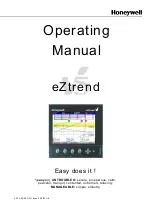
USB-TEMP User's Guide
Sensor Connections
3-6
Three-wire compensation
For accurate three wire compensation, the individual lead resistances connected to the ±I# pins must be of
equal resistance value.
Four-wire configuration
With a four-wire configuration, connect two sets of sense/excitation wires at each end of the RTD or
thermistor sensor. This configuration completely compensates for any lead-wire resistance and
temperature change in lead-wire resistance.
Connect your sensor with a four-wire configuration when your application requires very high accuracy
measurements. Examples of a four-wire single-sensor measurement configuration are shown in Figure
3-6 and Figure 3-7.
You can configure the USB-TEMP with either a single sensor per channel or two sensors per channel
pair.
Four-wire, single-sensor
A four-wire, single-sensor connected to the first channel of a channel pair is shown in Figure 3-6.
I#
+
NC
C#
H
C#
L
4W#
#
IC#
#
C#
H
C#
L
GND
I#
-
Figure 3-6. Four-wire, single RTD or thermistor sensor measurement configuration
A four-wire, single-sensor connected to the second channel of a channel pair is shown in Figure 3-7.
I#
+
NC
C#
H
C#
L
4W#
#
IC#
#
C#
H
C#
L
GND
I#
-
Figure 3-7. Four-wire, single RTD or thermistor sensor measurement configuration
A four-wire, two-sensor measurement configuration is shown in Figure 3-8.
I#+
NC
C#H
C#L
4W
#
#
C#H
C#L
GN
D
I#-
Figure 3-8. Four-wire, two RTD or thermistor sensors measurement configuration
When configured for two-wire mode, both sensors must be connected to obtain proper measurements.














































